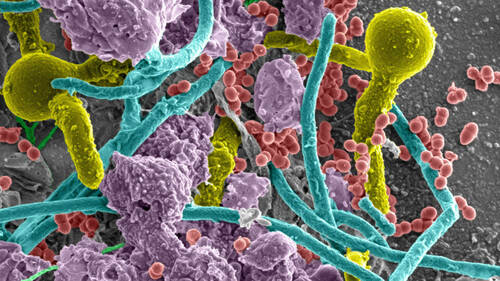Novel Catheter to Reduce Risk for Associated Urinary Tract Infections and Sepsis
|
By HospiMedica International staff writers Posted on 03 Jun 2024 |

Surgical procedures often create the need for using urinary catheters. However, a significant challenge associated with these catheters is the difficulty in predicting who might develop catheter-associated urinary tract infections (CAUTIs), which can potentially be fatal. Now, a study has identified a specific population more vulnerable to CAUTIs, paving the way for the development of a new catheter designed to reduce the inflammation and mechanical damage typically caused by conventional catheters.
The study conducted by researchers at the University of Notre Dame (Notre Dame, IN, USA) revealed that models with fibrinolytic deficiencies—conditions that result in the overactivation of the protein fibrin—are at a higher risk for severe and persistent CAUTIs. These models were also found to be more prone to developing sepsis. Fibrin plays a crucial role in blood clot formation, which is vital for the body’s repair mechanism following injuries. During the healing process, fibrinogen is converted into fibrin, forming net-like structures that accumulate and provide a breeding ground for pathogens, thereby fostering persistent infections. In their study of how this healing process could inadvertently facilitate infections during urinary catheterization using animal models, the researchers discovered that an increase in fibrin nets made the models more susceptible to high levels of pathogen colonization and elevated fibrinogen in the bloodstream. Consequently, the more fibrin present in the blood, the greater the likelihood of a CAUTI spreading to other organs.
However, blocking fibrinogen recruitment or accumulation significantly reduced CAUTIs, as the pathogens rely on the fibrin net-like structures for survival and proliferation. The study also noted that antifibrinolytic medications, commonly used in managing postpartum hemorrhages, traumatic injuries, and during surgical interventions, might increase the risk of CAUTIs in patients with catheters. Given the existing uncertainties on the best approaches for treating CAUTIs, the findings from this study provide valuable insights into prevention and management strategies. The innovative catheter developed by the researchers aims to mitigate CAUTIs by minimizing the inflammation and mechanical damage that traditional catheters cause and by preventing the formation of fibrin structures that enable pathogen infections.
“We strongly believe these findings provide key data to inform urinary catheterization guidelines in health care facilities and intensive care units, which will provide a higher quality of life to patients and minimize risk for complications,” said Ana Lidia Flores-Mireles, the Hawk Assistant Professor of Biological Sciences at Notre Dame.
Related Links:
University of Notre Dame
Latest Critical Care News
- Novel Cannula Delivery System Enables Targeted Delivery of Imaging Agents and Drugs
- Ingestible Smart Capsule for Chemical Sensing in the Gut Moves Closer to Market
- Novel Intrabronchial Method Delivers Cell Therapies in Critically Ill Patients on External Lung Support
- Generative AI Technology Detects Heart Disease Earlier Than Conventional Methods
- Wearable Technology Predicts Cardiovascular Risk by Continuously Monitoring Heart Rate Recovery
- Wearable Health Monitoring Device Measures Gases Emitted from and Absorbed by Skin
- Groundbreaking Technology Rapidly Detects Airborne Influenza Viruses
- Handheld Device Could Transform Heart Disease Screening
- Flexible Semi-Autonomous Robot Could Deliver Medicine Inside Body

- Neurorestorative Treatment Strategies Hold Promise for Most Severe Forms of Epilepsy
- Gene Discovery Could Help Grow New Heart Arteries
- Study Discovers Invisible Transmission of Common Hospital-Associated Infection
- Non-Invasive Neuro-Ophthalmology Techniques Could Detect Brain Tumors Earlier
- Mass Manufactured Nanoparticles to Deliver Cancer Drugs Directly to Tumors
- World’s Smallest Pacemaker Fits Inside Syringe Tip

- AI-Powered, Internet-Connected Medical Devices to Revolutionize Healthcare, Finds Study
Channels
Surgical Techniques
view channel
Intravascular Imaging for Guiding Stent Implantation Ensures Safer Stenting Procedures
Patients diagnosed with coronary artery disease, which is caused by plaque accumulation within the arteries leading to chest pain, shortness of breath, and potential heart attacks, frequently undergo percutaneous... Read more
World's First AI Surgical Guidance Platform Allows Surgeons to Measure Success in Real-Time
Surgeons have always faced challenges in measuring their progress toward surgical goals during procedures. Traditionally, obtaining measurements required stepping out of the sterile environment to perform... Read morePatient Care
view channel
Portable Biosensor Platform to Reduce Hospital-Acquired Infections
Approximately 4 million patients in the European Union acquire healthcare-associated infections (HAIs) or nosocomial infections each year, with around 37,000 deaths directly resulting from these infections,... Read moreFirst-Of-Its-Kind Portable Germicidal Light Technology Disinfects High-Touch Clinical Surfaces in Seconds
Reducing healthcare-acquired infections (HAIs) remains a pressing issue within global healthcare systems. In the United States alone, 1.7 million patients contract HAIs annually, leading to approximately... Read more
Surgical Capacity Optimization Solution Helps Hospitals Boost OR Utilization
An innovative solution has the capability to transform surgical capacity utilization by targeting the root cause of surgical block time inefficiencies. Fujitsu Limited’s (Tokyo, Japan) Surgical Capacity... Read more
Game-Changing Innovation in Surgical Instrument Sterilization Significantly Improves OR Throughput
A groundbreaking innovation enables hospitals to significantly improve instrument processing time and throughput in operating rooms (ORs) and sterile processing departments. Turbett Surgical, Inc.... Read moreHealth IT
view channel
Printable Molecule-Selective Nanoparticles Enable Mass Production of Wearable Biosensors
The future of medicine is likely to focus on the personalization of healthcare—understanding exactly what an individual requires and delivering the appropriate combination of nutrients, metabolites, and... Read more
Smartwatches Could Detect Congestive Heart Failure
Diagnosing congestive heart failure (CHF) typically requires expensive and time-consuming imaging techniques like echocardiography, also known as cardiac ultrasound. Previously, detecting CHF by analyzing... Read moreBusiness
view channel
Expanded Collaboration to Transform OR Technology Through AI and Automation
The expansion of an existing collaboration between three leading companies aims to develop artificial intelligence (AI)-driven solutions for smart operating rooms with sophisticated monitoring and automation.... Read more

















